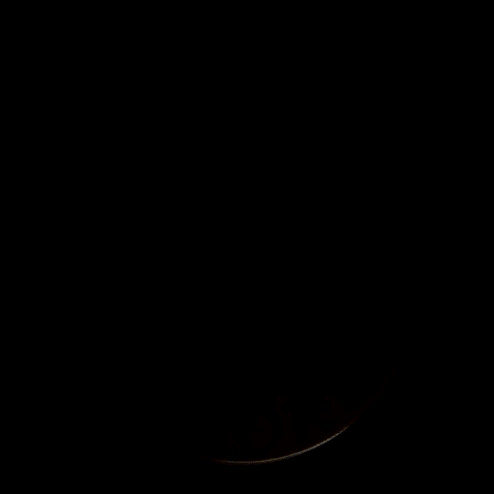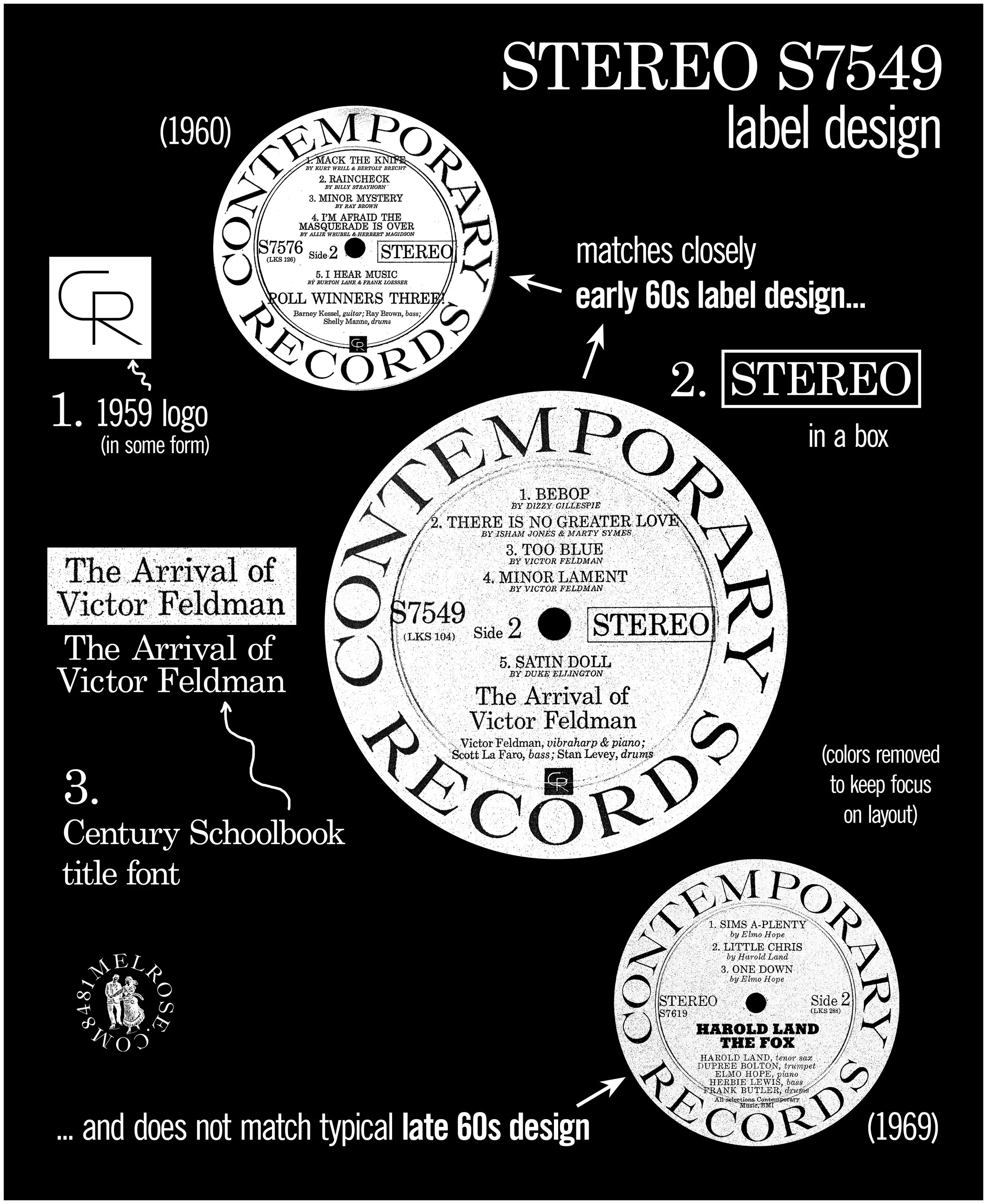
page 1
a) jacket iterations
b) labels & rings
c) lacquers
page 2
d) deliveries
e) post-Koenig
f) foreign exchange
g) the undelivereds
Sunshine
the young British vibraphonist Victor Feldman found especially restorative to his spirit. A 1953-54 tour through India (with Eddie Carroll’s band) had made that preference clear:
“I wasn’t well in England… the hot climate of India did me good.”
(GTJ & CR News Vol. 3 No. 1, March 1958)
Years later, in 1957, he found himself in toasty California supporting Buddy DeFranco through a string of clubs. One of them was The Lighthouse in Hermosa Beach, where Feldman attracted the attention of in-house leader Howard Rumsey, who quickly offered him a regular gig in the All-Stars house band.⁽¹⁾
So, like many who seek the sun, Victor Feldman shacked up in the City of Angels.
The West Coast scene took notice. Contemporary booked him to two summer ’57 dates, as sideman to Bob Cooper and Leroy Vinnegar. He then led a September date for Mode Records flanked by a crack LA crew: Harold Land, Carl Perkins, Vinnegar, Frank Rosolino, and Stan Levey.
Feldman was still 23 years old at this point, a star on the rise. Lester Koenig read the tea leaves and swooped in, inking the youngster to an exclusive: two LPs a year for the next three years.⁽²⁾ The first of those LPs, C3541 Suite Sixteen, compiled a nonet of 1955 tracks previously released on Tempo in the UK.
Plans were meanwhile set in motion for LP two, which would be a trio recording: vibes/piano, bass, and drums.
Stan Levey, the veteran drummer who’d sat in on the Mode date, slotted smoothly in behind the kit. Bassist, however, proved a more logistical question. Feldman’s (and Levey’s) preference was a creditless 21-year-old who’d recently fled Los Angeles for a steady gig in Chicago. In theory, Contemporary could have called any one of its undefeated bassmen to step in, eg. Feldman’s recent collaborator Leroy Vinnegar.
Clearly Les was eager to please the new signee, though, so the label asked to Chicago for Scott LaFaro to return west.⁽³⁾
Trio assembled, The Arrival of Victor Feldman was recorded on January 20th and 21st, 1958.
***
A bit of technica now: this came during the two-year stretch when Contemporary ran simultaneous mono and stereo tape machines. So a stereo mix was captured… but went unheard by the public for many years. It wasn’t until the late 1960s, as mono variants were being phased out of print, that the stereo LP was finally dropped.
The practical result of this is that mono and stereo variants never coexisted in the marketplace. So we can study this title using a single timeline, one which starts with mono and ends with stereo. Let’s begin with the jackets.
a) jacket iterations
The mono art.
The photo shows the young immigrant having beached on the California coast, there finding his dinghy flanked by American sidemen in sailors’ hats. The moment of sun-kissed frivolity — pure California — was captured by drummer Stan Levey’s self-timer. (A drummer who, fifteen years hence, would retire from jazz to pursue photography full-time.)
Hired to overlay the photo, Robert Guidi & Tri-Arts provided dynamite brushwork— and thus we arrive at the jacket for C3549 The Arrival of Victor Feldman… another Contemporary classic.
Detractors may point to this as a prime example of the unseriousness of West Coast Jazz, and to West Coast Jazz’s credit, I’d have to agree. This is music; are you not entertained?? There’s a sense of joy and comfort and feeling pretty good in art like this. It’s nice to see artists enjoying themselves— and inviting us to the party.

a translation to STEREO…
As the stereo mix sat unreleased, this title skipped the late-50s/early-60s “banner” design schemes which were necessary in those periods to differentiate mono and stereo variants. When stereo was finally released in the late 1960s, it arrived instead with a “top corner stereo” jacket design closely tracing the mono artwork.
Stereo S7549 / Jacket Iteration No. 2 (date floor: 1980)
The debut stereo jacket remained unchanged until at least 1980, after which it was reprinted with a rear slick reflecting the new P.O. Box 2628 address. I’m working on sourcing that jacket and incorporating it here.
b) labels & rings
Mono Labels.
Alone in the market (without a stereo counterpart), the mono LP had the eternal pleasure of retaining its C3549 catalog number. These mono labels were only ever seen in the original yellow, imprinted with a deep groove typical of RCA Hollywood pressings in that era.

The Stereo Label: Design.
The stereo labels unretired an old label scheme (last seen on S7610 The Cry in 1963), the fact of which might provide some insight on timing and intent. This scheme in question was the classic Contemporary look, featuring 1) Century Schoolbook font title, 2) STEREO inside a box border, and 3) a CR logo at either 6 or 12 o’clock, in various placements (see Label Color & Design).
Stereo S7549 The Arrival of Victor Feldman, alongside the late 1960s stereo debuts of S7545-47 All Night Sessions and S7550 Grooveyard, adopts these three design elements which point backwards to the early 1960s, suggesting — perhaps — that all of their labels (and thus, releases) were planned far earlier:
Of note: Schoolbook font did freshly appear on some other mid-late 60s and early 70s releases — S7526, S7537, and S7539 — all of which represented the premiere stereo deliveries of 1957 recordings. However, unlike the similarly-delayed titles noted above, the latter trio exhibited neither the stereo box nor the CR logo.
Also of note: several Stereo Records titles, when finally transitioned to Contemporary branding in the late 60s and early 70s, took on the earlier label design scheme with boxed STEREO, Century Schoolbook, etcetera. Among these are S7532 Art Pepper Meets the Rhythm Section, S7535 The Poll Winners, S7555 Jazz Giant, and S7556 The Poll Winners Ride Again. I’d say the hypothesis above holds for these titles: that such labels were prepped back in the late 50s/early 60s but their Stereo Records designs were instead maintained and reprinted for a while longer.
Sorry if this minutiae sucks. We’re going to come back to this topic in a moment.
The Stereo Label: Colors and Pressing Rings.
The first stereo runs of S7549 donned the green CR label imprinted with a “deep groove” typical of RCA dies through 1970. Sometime after 1972, these labels were reprinted in yellow/black. It’s unknown at present if S7549 yellow labels were introduced to this title while still at RCA (<1973) or if the green label might have persisted into Monarch runs. Either or neither could be true.
These illustrate Contemporary’s pressing plant rings in nice succession, from deep groove (RCA) to 1-inch ring (RCA) to 73mm ring (Monarch) to 69mm ring (Columbia Records Pressing aka CBS, Santa Maria).
It’s easy to confuse Monarch and CBS pressings. Yellow stereo labels were commonly used at both. A lot of Monarch-stamped Contemporary metalwork (most of which originated at RCA Hollywood) traveled to CBS in 1974, so you’ll find MR in the runouts of many CBS pressings. This confusion is compounded by the negligible 4mm difference in ring width, a difference easy to miss if you’re not actively looking for it.
So you should look for it. Here’s a angled study of the labels for these S7549 Monarch and CBS pressings:

Monarch Mfg. Co.

Columbia Pressing Plant, Santa Maria
You may notice a difference in surface gloss which is, I’m afraid, really too subtle to rely on as an identifier. This might be caused by something I don’t understand about pressing (heat, etc.) so let’s not dig into that.
More reliably, simply measure the pressing ring to identify these. But also recognize the specific quality of the rings; both inner and outer parts of the CBS label are distinctly flat in contrast with the Monarch’s “pinched” imprint, which creates some subtle convexity over the center of the label.
c) lacquers
I’ve seen one mono lacquer set with me own eyes and another set over the computer. There might be more.

Stereo gives us two and a half generations of lacquers. Among them the fun one (informationally, if not sonically) is LKS-103-D3, which sits among the rare handful of Contemporary lacquers processed at Monarch.

Let’s return to a hypothesis spurred by label design: that planning for this title’s stereo release started in the early 1960s. It might have been earlier. To go a little deeper: the stereo tape numbers assigned to this title (LKS-103 and -104) point to assembly in 1959. We can see the numbers adjacent to these:
The Arrival of Victor Feldman seems to have had stereo masters assembled in 1959 for potential release but didn’t clear whatever obstacles stood in its way. Looking at the four titles circled in the chart above, S7549 Arrival and S7550 Grooveyard in particular walked similar paths. (S7545-47 All Night Sessions received the same treatment vis-a-vis release window and label design, but they differ in that their tape numbers LKS 233 to 238 point to assembly c. 1961 rather than 1959. See more at Tape Numbers.)
For S7549 and S7550, timing evidence and the lack of D1 lacquers leave open the possibility of lacquer attempts in earlier eras. Which would not be strange, given early 1960s lacquers were cut for S7526, S7538, and S7539 but not used on commercial pressings until the late 60s/early 70s.
I don’t think we’ll ever get positive or negative confirmation on these hypotheticals, but we can interpret some downstream physical data on the first printed company inner sleeve. This was designed c. 1962, when the newest title was 3602 Smack Up. Its discography selectively indicates titles “available in stereo” in blue:
In several cases, including The Arrival of Victor Feldman, the supposition of stereo availability was simply not true. It seems implausible that it was an oversight; to me, this shows serious intent from the label to actually release these shelved stereo efforts at some point soon.
Keeping focus here on 3549, why might it have been so delayed? Could sonic considerations have figured into the equation? This album features serious treble… could it have proved too demanding of the Westrex 3A and 3C heads? Did the recording itself render their 1950s/early 1960s lacquer efforts unacceptable?
I’m reaching. Only one thing feels certain: if the album were popular enough in mono, a stereo disc would have swiftly found its way to market, just as Ornette Coleman’s rising star precipitated a stereo release of Something Else. So the belated stereo release of Arrival — and perhaps other titles as well — may simply illuminate weak performance by the title. We can be glad the stereo tapes did eventually surface, because this is one of the best sonic gems in the stacked Contemporary catalog.
Continued on page 2 >
Sources:
(1) “Who’s Who: Victor Feldman.” GTJ & CR News, vol. 3, no. 1, Mar. 1958, p. 3. Retrospective Index to Music Periodicals.
(2) “Contemporary Signs Feldman.” GTJ & CR News, vol. 2, no. 5, Dec. 1957, pp. 1, 5. Retrospective Index to Music Periodicals.
(3) Koenig, Lester. “Scott LaFaro 1936-1961.” Liner notes appendix. For Real. Hampton Hawes. Contemporary Records, 1961. Vinyl.
Cerra, Steven. “Leroy Vinnegar Sextet - Leroy Walks! (1957).” JazzProfiles, 13 July 2023, jazzprofiles.blogspot.com/2023/07/leroy-vinnegar-sextet-leroy-walks-1957.html. Accessed 2024.





